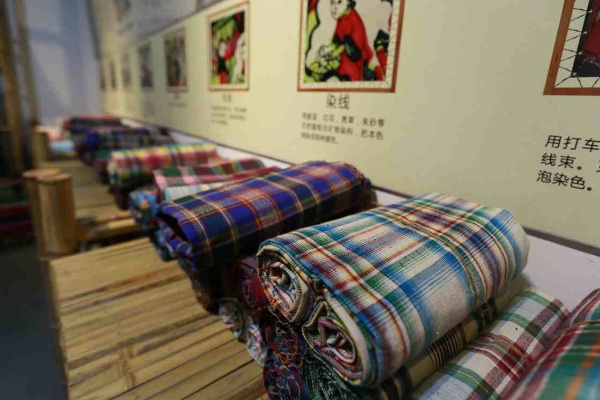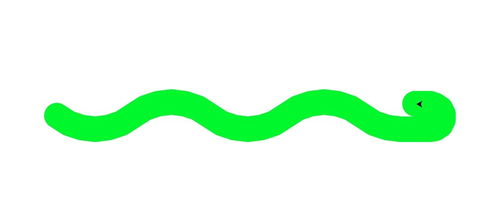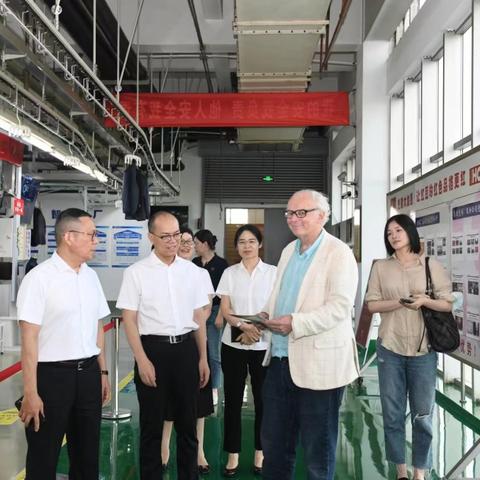The Essential Guide to Textile Antimicrobial Agents:A Comprehensive Analysis
This article provides a comprehensive analysis of textile antimicrobial agents, providing an essential guide for those seeking to protect their garments against harmful microbes. The discussion covers the various types of textile antimicrobial agents, including physical and chemical treatments, as well as natural materials like silver and zinc oxide. It also explores the effectiveness of these agents in preventing bacterial growth and the potential risks associated with their use. Additionally, the article discusses the importance of understanding the properties of different textile materials when selecting an appropriate antimicrobial treatment. Overall, this article aims to provide readers with a thorough understanding of textile antimicrobial agents and their applications, helping them make informed decisions when it comes to protecting their clothing from harmful microbes.

Introduction: In the realm of textiles, the need for hygiene and protection against microbial contamination has become increasingly important. Textile antimicrobial agents play a crucial role in maintaining the cleanliness and freshness of clothes and textile products. In this guide, we will explore the various types of textile antimicrobial agents, their effectiveness, and how they are used in different applications.
Types of Textile Antimicrobial Agents:
- Chemical Antimicrobial Agents: These include quaternary ammonium compounds, aldehyde-based preservatives, and organic acids. They work by disrupting the cell membranes of bacteria, inhibiting their growth and reproduction.
- Physical Antimicrobial Agents: These include silver nanoparticles, zinc oxide, and titanium dioxide. They act as physical barriers that prevent the adherence of bacteria to the surface of textiles.
- Biodegradable Antimicrobial Agents: These include natural extracts such as tea tree oil, essential oils, and plant extracts. They have antimicrobial properties but are biodegradable and safe for human skin.
- Enzymatic Antimicrobial Agents: These include enzymes derived from plants or microorganisms that break down cell walls and kill bacteria.
- Novel Antimicrobial Agents: These include nanomaterials, quantum dots, and other innovative technologies that offer enhanced efficacy and reduced environmental impact.
Effectiveness of Textile Antimicrobial Agents: The effectiveness of textile antimicrobial agents depends on several factors, including the type of agent, its concentration, and the fabric's material and structure. Chemical agents may be more effective against bacteria that are resistant to other antimicrobials, while physical agents may be more effective against bacteria that are embedded in the fabric. Biodegradable agents are generally considered safer for consumers and the environment, but their effectiveness may be limited compared to chemical agents.
Applications of Textile Antimicrobial Agents:
- Industries: Textile antimicrobial agents are widely used in various industries, including healthcare, hospitality, and sportswear. They are particularly important in hospitals, nursing homes, and sanitary facilities where hygiene is paramount.
- Fashion Industry: Textile antimicrobial agents are also popular in the fashion industry, where they can help protect clothing from bacterial growth and maintain their quality over time.
- Sportswear: In sportswear, antimicrobial agents can help prevent the spread of infections during sports events and competitions.
- Home Appliances: Textile antimicrobial agents are also used in home appliances such as washing machines, air conditioners, and refrigerators to prevent the growth of mold and mildew.
- Personal Care Products: Antimicrobial agents are often incorporated into personal care products such as soaps, shampoos, and body washes to keep them free from harmful bacteria.
Case Study: One example of the effectiveness of textile antimicrobial agents is the use of silver nanoparticles in clothing. Silver is known for its antibacterial properties, and when combined with textile materials, it can provide effective protection against bacterial growth. For example, a study published in the Journal of Cosmetic Science found that silver-treated clothing significantly reduced the number of bacteria on the surface of garments after wearing them for only 30 minutes. This finding highlights the potential of textile antimicrobial agents in improving the hygiene and safety of consumer products.
Conclusion: Textile antimicrobial agents are an essential component of modern textile production, offering significant benefits in terms of hygiene, protection, and sustainability. By understanding the different types of agents available and their effectiveness, manufacturers can choose the appropriate approach to meet their specific needs and goals. As technology advances, we can expect to see even more innovative and effective textile antimicrobial solutions in the future.
随着人们对健康生活的追求,抗菌纺织品的需求日益增长,在这个背景下,涌现出一批优秀的纺织品抗菌剂品牌,它们致力于提供高效、环保且安全的抗菌解决方案,本篇将为您介绍几个知名的纺织品抗菌剂品牌。
品牌介绍
XYZ抗菌纺织品品牌
XYZ品牌以其卓越的抗菌性能和环保理念受到广大消费者的青睐,该品牌主要生产各种类型的抗菌纺织品,包括但不限于床单、毛巾、衣物等,其产品采用先进的抗菌技术,可以有效抑制细菌生长,提高产品的卫生性能。
在产品种类方面,XYZ品牌涵盖了各种材质和规格的抗菌纺织品,包括纯棉、涤纶、亚麻等天然纤维以及各种特殊材质的抗菌纺织品,该品牌还注重产品的环保性,采用可持续的材料和生产工艺,确保产品的健康和环保。
在市场定位方面,XYZ品牌主要面向中高端市场,提供高品质、高安全性的抗菌纺织品,其产品广泛应用于医疗、家居、服装等多个领域,深受消费者喜爱。
Amanda抗菌纺织品品牌
Amanda品牌以其独特的抗菌技术和高品质的产品赢得了消费者的信赖,该品牌主要生产各种类型的抗菌纺织品,包括床单、毛巾、衣物等,其产品采用了独特的纳米技术,可以有效抑制细菌生长,同时保持产品的柔软舒适性。

在产品特点方面,Amanda品牌的抗菌纺织品具有出色的抗菌效果和柔软舒适性,其产品可以有效抵抗多种细菌的滋生,同时保持产品的清洁卫生,该品牌还注重产品的环保性,采用可降解的材料和生产工艺,确保产品的可持续使用。
在市场推广方面,Amanda品牌主要通过线上线下多种渠道进行宣传推广,其产品广泛应用于医疗、家居、服装等多个领域,深受消费者喜爱,该品牌还积极参与各种行业展会和活动,展示其产品的优势和特点。
案例分析
以XYZ抗菌纺织品品牌为例,介绍其成功案例及其背后的原因。
高效抗菌性能
XYZ品牌的某款抗菌床单采用了独特的纳米技术,可以有效抑制细菌生长,该床单采用了高品质的材料和工艺,经过严格的检测和测试,其抗菌性能达到了很高的水平,消费者在使用该款床单后,反馈其产品可以有效抵抗多种细菌的滋生,同时保持了产品的清洁卫生,该款床单还具有柔软舒适性,深受消费者喜爱。
环保理念
XYZ品牌的另一款抗菌毛巾采用了可降解的材料和生产工艺,该毛巾在使用过程中不会对环境造成污染,符合环保理念,消费者在使用该款毛巾后,对其产品的环保性给予了高度评价,该款毛巾还具有抗菌效果和柔软舒适性,深受消费者喜爱。
市场趋势分析
随着人们对健康生活的追求和抗菌纺织品的需求日益增长,纺织品抗菌剂市场呈现出以下几个趋势:
-
高品质、高安全性的产品需求增加:消费者对产品的品质和安全性要求越来越高,抗菌纺织品成为市场上的热点产品之一。
-
环保理念越来越受到重视:随着环保意识的提高,消费者对环保型抗菌纺织品的需求不断增加。
-
创新技术不断涌现:随着科技的不断进步,纺织品抗菌剂领域涌现出越来越多的创新技术,如纳米技术、生物技术等。
纺织品抗菌剂品牌是市场上的一支重要力量,它们致力于提供高品质、高安全性的抗菌纺织品,满足消费者的需求,在未来,纺织品抗菌剂市场将继续保持增长趋势,同时面临着更多的机遇和挑战,我们建议消费者在选择纺织品抗菌剂品牌时,应该注重产品的品质、安全性和环保性等方面。
Articles related to the knowledge points of this article:



